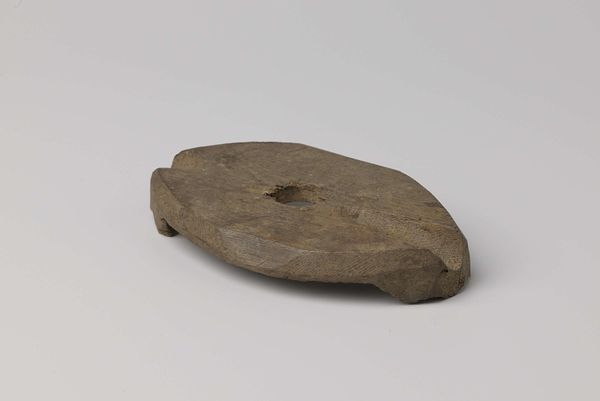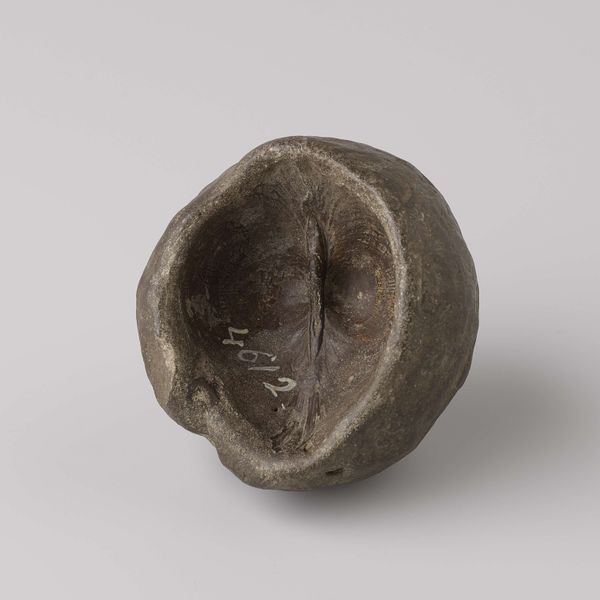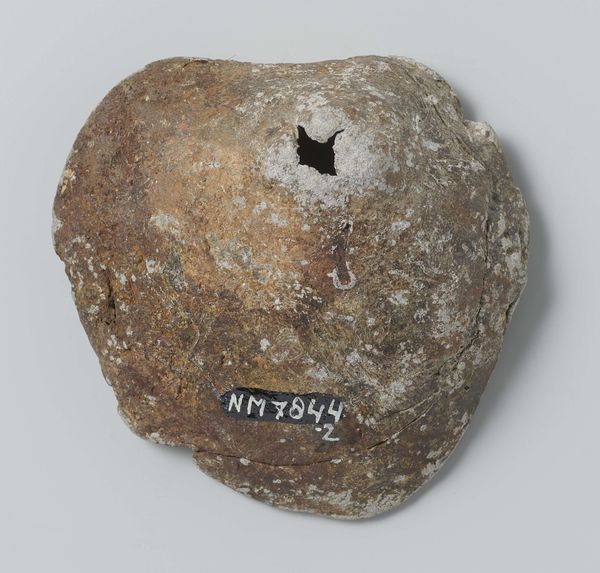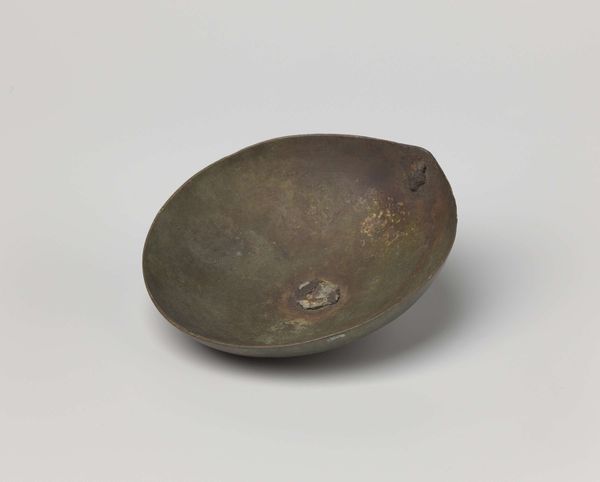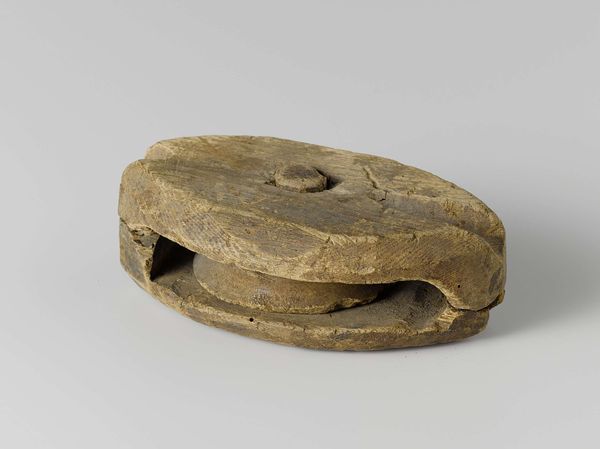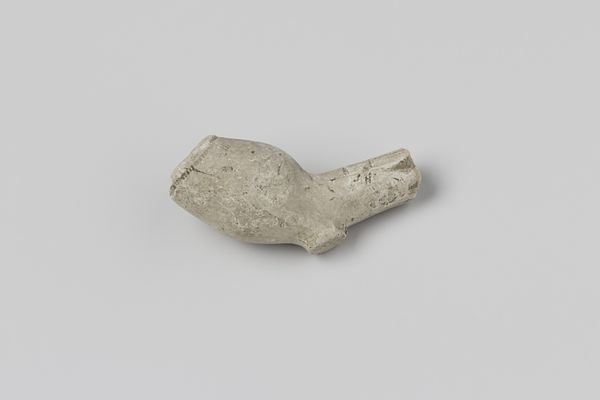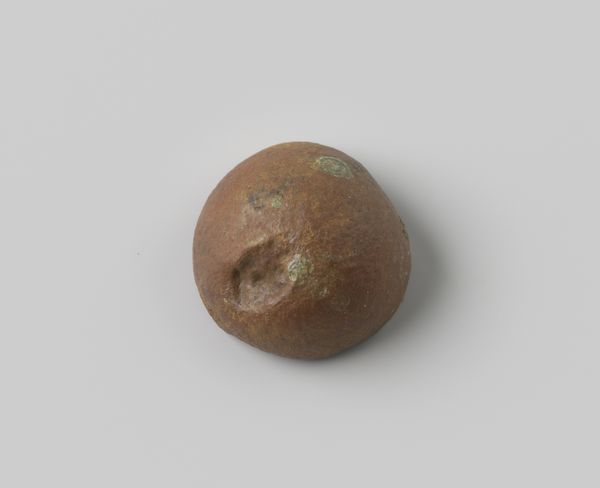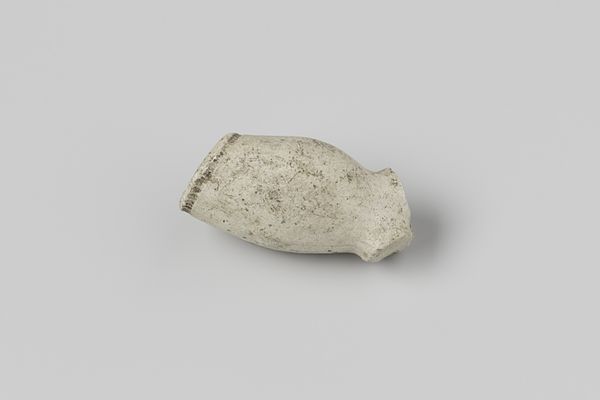
metal, sculpture
#
medieval
#
metal
#
sculpture
#
sculpture
Dimensions: height 4 cm, diameter 7 cm
Copyright: Rijks Museum: Open Domain
Curator: Well, here we have what's known as a lid from a tin flapkan, or perhaps a jug, created around 1590 to 1596. It resides here at the Rijksmuseum. Editor: My initial impression is one of age and survival. It’s quite simple in form, almost helmet-like. The damage adds a poignant touch, a story of resilience etched in metal. Curator: Indeed. These flapkannen were common household items. The lid, though small, speaks volumes about the socio-economic landscape of the time. Tinware signified a level of domestic comfort, a step above the most basic earthenware. Editor: The rounded form evokes a sense of protection, containment. Lids, after all, guard what's precious. Thinking about the missing portion – it's as if a piece of history itself is missing, urging us to imagine what has been lost or altered over time. Curator: Precisely. The presence of this object in a museum elevates it from mundane utensil to cultural artifact. It reminds us how seemingly insignificant items can reveal a great deal about daily life, trade, and artistic practices in the late 16th century. It represents cultural status. Editor: And the material itself – the cool, solid nature of tin – lends a sense of permanence, almost defiance against the ravages of time. Those little corroded holes remind me of ancient maps. And perhaps it once sat beside the hearth fire, adding a visual link to human storytelling. Curator: I hadn’t considered its connection to maps. Wonderful thought. Editor: Considering this fragment is displayed so prominently—it becomes a potent symbol of collective memory, bridging past and present with tangible, weathered beauty. Curator: It does makes one think. And what better purpose for historical pieces. Editor: It really does give a sense of resilience. Curator: Let’s proceed onward to the next exhibit, shall we?
Comments
No comments
Be the first to comment and join the conversation on the ultimate creative platform.
